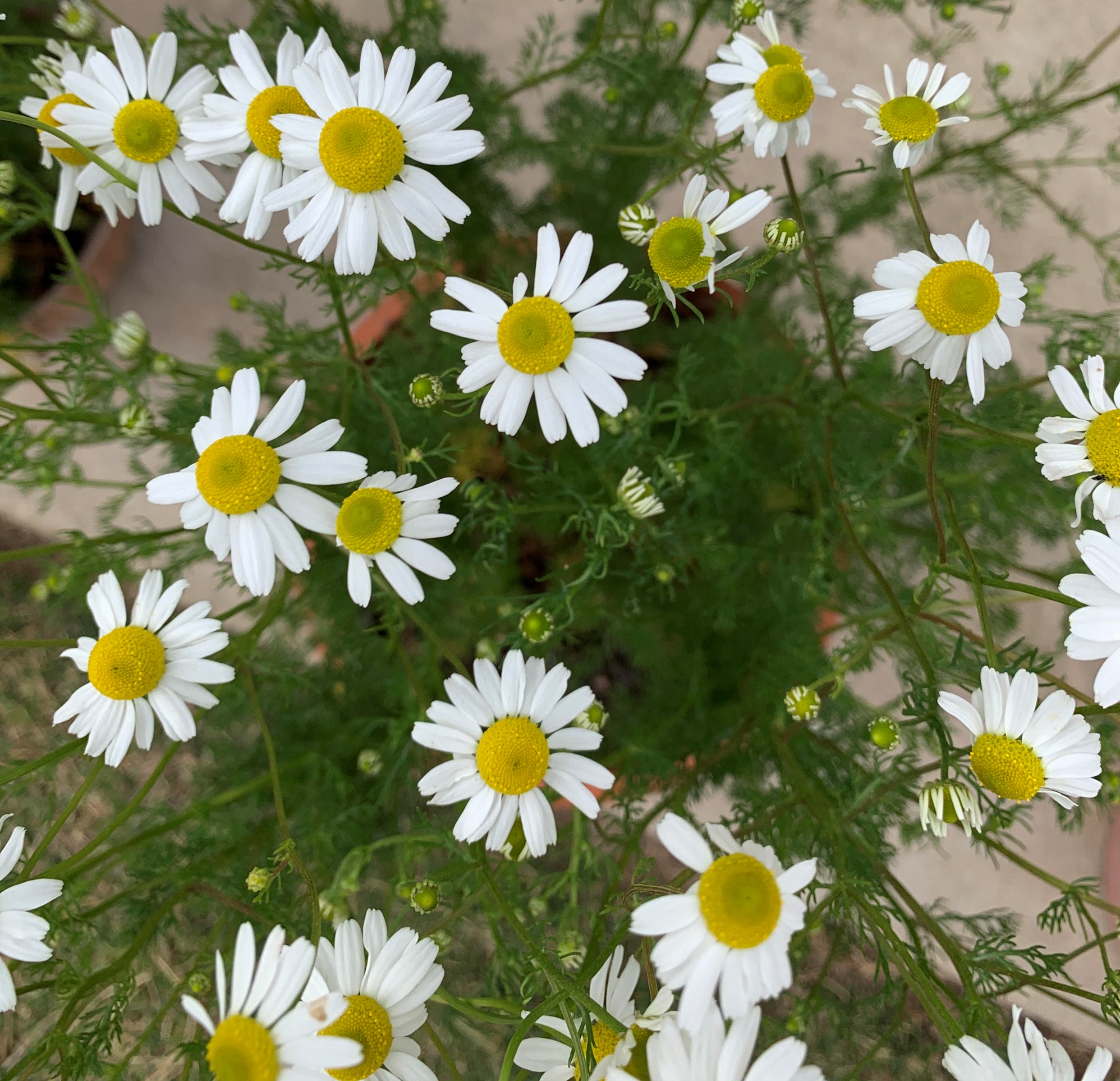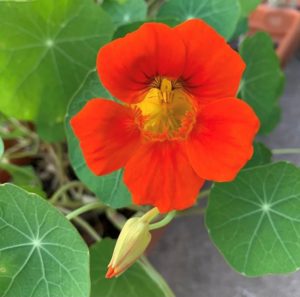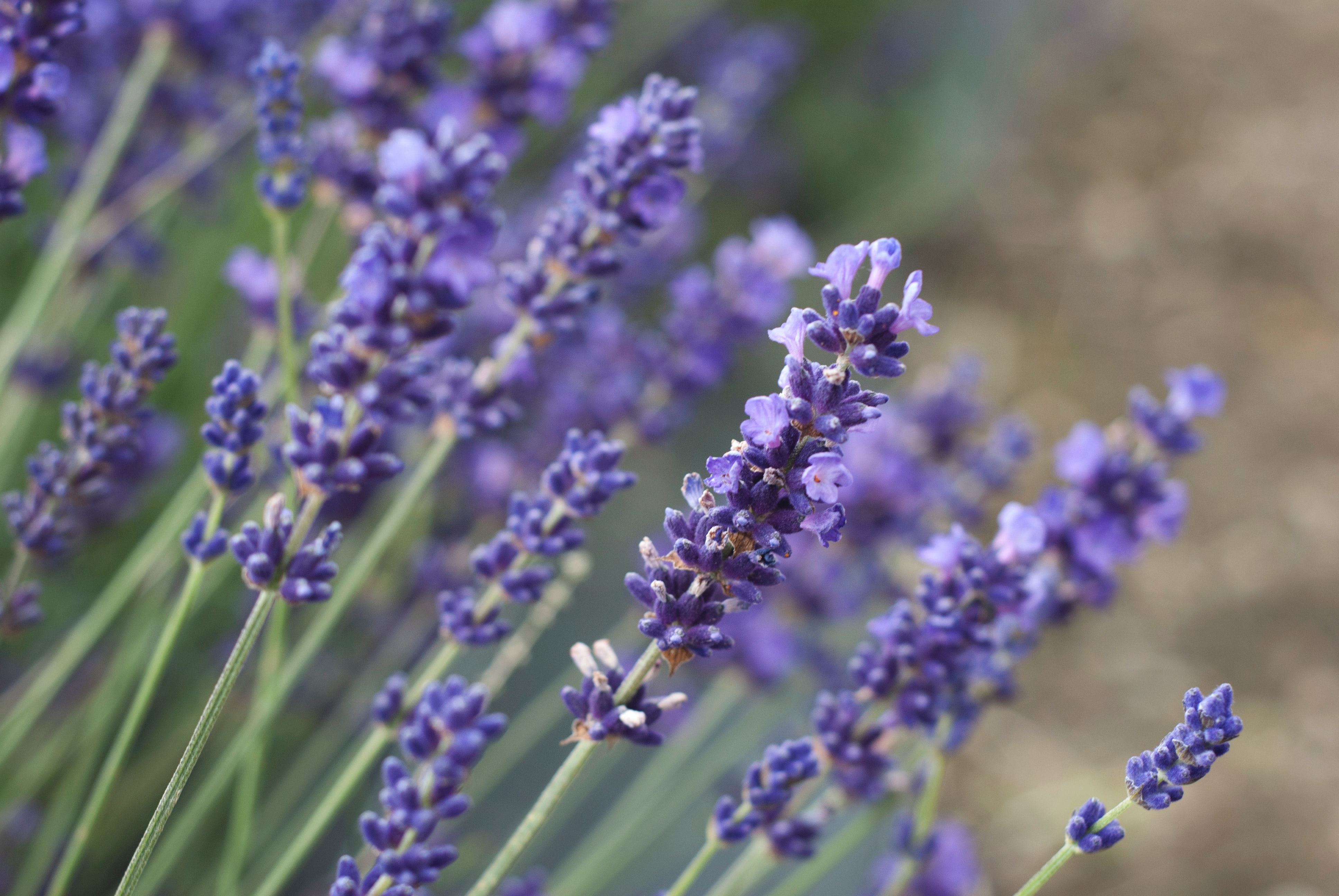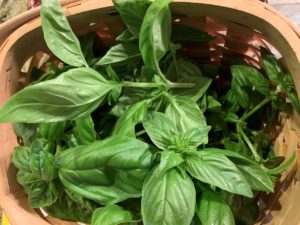Chamomile is a member of the Aster (Asteraceae) family as are daisies, calendula, zinnias, dahlias, cosmos, marigolds, artichokes, and lettuce. The two main types of chamomile are Roman chamomile, which is also referred to as English and Russian chamomile, and German chamomile, which is also called Hungarian, Italian, and blue chamomile. Roman and German chamomile have a lot in common, but there are some notable differences as well.
What They Have in Common
Roman and German chamomile are both native to Europe and are used in herbal remedies, most notably for their calming properties. But both kinds of chamomile also have antiseptic, antispasmodic, anti-inflammatory, antifungal, antibacterial, and insect repelling properties.
Both varieties of plants have fern-like stems and produce petite flowers with white petals and yellow-green coned centers that smell like apples. It is no wonder that the name chamomile comes from the Greek word chamaimelon, which means earth apple or ground apple. Both Roman and German chamomile are easy to care for and can be used to attract pollinators. They are also good as companion plants because their scent helps repel pests like the cucumber beetle.
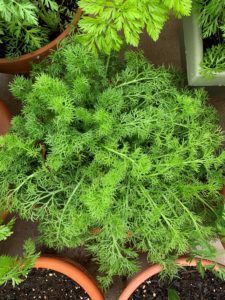
How They Differ
German chamomile is an annual plant with a bushy shape that grows to a height of two to three feet. It is a prolific self-seeder and, as a result, many confuse it with being a perennial. In addition, German chamomile produces more flowers than its counterpart.
Roman chamomile, on the other hand, is a true perennial that reaches heights of only about twelve inches. Instead of a bush shape, it grows along the ground and can be used as a type of ground cover. Unlike German chamomile, Roman chamomile spreads by rhizomes. While German chamomile may produce more flowers, Roman chamomile is said to have more fragrant ones.
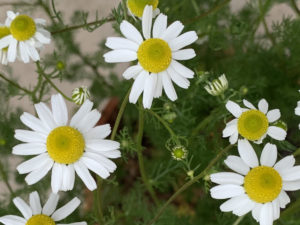
How to Plant
Chamomile can be started from seeds indoors in a quality potting mix several weeks before the last expected frost in spring, or directly sown once the threat of frost has passed. There is conflicting counsel as to the best way to sow chamomile seed. Some recommend planting seeds about 12 inches (30.5 cm) apart and no deeper than 1/4 inch (0.65 cm), and lightly covering with a quality soil or potting mix. Others, however, recommend sowing seeds on the surface of the soil as they need light in order to germinate. The seeds are very small so some choose to simply scatter them on top of the soil and then gently pat the surface. If you choose this method, you will need to thin them out once the seedlings reach a few inches (5 cm) tall. Regardless of the method you choose, keep the soil moist but not soggy and the seeds will germinate in one to three weeks.
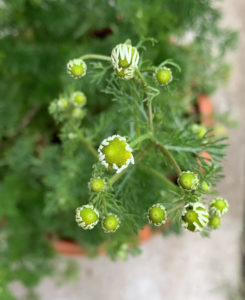
If planting in containers, you can plant 3 seeds in a 12 inch (30.5 cm) container or scatter the seeds on top and later thin all but about three seedlings. Like most herbs, chamomile is rather forgiving when it comes to soil pH. It grows well in slightly acidic to neutral soil (5.6 to 7.5).
Sun
Both kinds of chamomile grow best with at least six hours of full sun, however, they do well with partial shade, especially in warmer climates where it may need some relief in the hot afternoons.
Water
Like oregano and thyme, chamomile is considered drought resistant. However, the roots are shallow and the flowers will bloom longer if watered more often. Check the soil to a depth of about one inch to see if water is needed. Chamomile grown in containers will dry out quicker so you will need to monitor them more closely than plants grown in the ground.
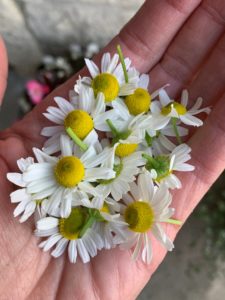
This article contains affiliate links. If you make a purchase using one of these links, I will receive a very small commission at no additional cost to you, and it will help me maintain this website. Rest assured, I only recommend products I actually like!
Fertilizer
It is really not necessary to fertilize chamomile unless you are growing it in containers. If that is the case, use a fertilizer that is higher in phosphorous. Follow the package directions as too much fertilizer can result in spindly growth and fewer flowers.
Pests and Diseases
Chamomile has very few enemies. Aphids, thrips, and mealybugs are the only real threats If the plant is stressed it will be more susceptible to these pests. The primary plant disease to keep an eye out for is powdery mildew.
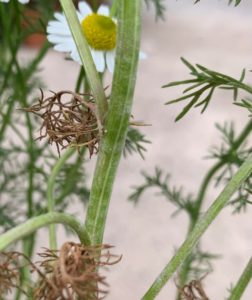
How to Harvest and Preserve Chamomile Flowers
The petals on chamomile flowers will fold downward from around dusk to early morning and then open back up when the sun comes out. The best time to harvest the blooms is after the dew dries in the morning. Pinch off fully mature flowers just underneath the bloom, leaving the stem behind. The more flowers you harvest, the more blooms the plant will produce. If you have a lot of chamomile to harvest, you may want to try using a berry picker like this one to make harvesting less tedious.
Fresh flowers can be air-dried or dried using a dehydrator on the lowest setting (95o F to 105o F or 35o C to 40o C) and then stored in a glass jar with a lid. Make sure the flowers are completely dry before storing in order to prevent mold. If kept in a dark, cool place, dried chamomile can last up to one year. Some recommend freezing fresh flowers in an airtight container. The blooms are said to last up to six months if the container is not been opened.
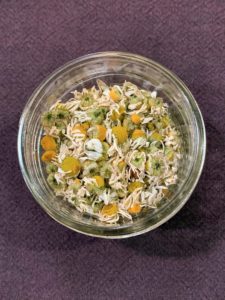
How to Harvest Seeds
Harvesting seed from chamomile flowers is easy. Simply allow the flowers to dry on the stem or harvest fresh flowers and dry them as described above. Once dry, gently rub the flower’s cone where the tiny seeds are located. It should easily fall apart. You can leave the chaff coating on the tiny seeds as it may not come off easily. Be sure the seeds are completely dry before storing or planting. These are the seed packet-sized envelopes and small baggies I use for storing my seeds.
How to Make Chamomile Tea
One of the most common ways to use dried chamomile flowers is in tea. This naturally caffeine-free beverage is known for its calming properties. Many consider it their favorite part of a bedtime routine. Roman chamomile will work, but German chamomile is used more often for making tea.
To make the tea, place one to three teaspoons of dried, stem-free flowers in a tea infuser and add to one cup of hot water. Do not use boiling water as the heat can damage the herbal properties. Steep for three to five minutes.
If you enjoy making tea, you may want to consider getting this personal-sized teapot that has a built-in steamer and strainer all in one. Fill the center section with flowers or herbs and add hot water. After steeping, place the teapot over your teacup or mug. The tea will be released while the flowers remain in the strainer. What I especially like about this brand is that the profits go to help communities obtain clean drinking water.
Like other teas, chamomile can have slightly bitter undertones. The longer you steep it, the more bitter it will become. For this reason, some recommend brewing it with a sprig of mint or adding honey. But if the bitter taste is too much for you, consider using fresh flowers. Although you will have to use more flowers, it definitely reduces the bitter aftertaste. Use three to six tablespoons of fresh flowers per one cup of hot water and steep for three to five minutes. Strain the flowers using a tea strainer if not using the personalized teapot.
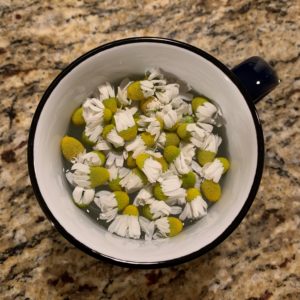
If you are allergic to ragweed, or other members of the Aster family, you may react to chamomile as well. Some caution pregnant women against drinking chamomile and other herbal teas during pregnancy, while others promote its use. If you are pregnant, please consult your health care provider for guidance.
Other Uses
There are so many practical and fun uses for chamomile! Instead of listing my favorite ideas, I thought I would let you pick out your own. Together, Abra’s Kitchen and The Herbal Academy offer almost three dozen suggestions that are sure to inspire you! In addition, The Herbal Academy also has detailed instructions on how to make infused oils for culinary use, as well as for beauty and wellness.
Chamomile is such a rewarding herb to grow! Not only does it look and smell amazing, but the blooms are beneficial to the garden and perfect for your personal use.
Thank you for reading this article! If you found it helpful, please consider sharing it with others via email or social media!
